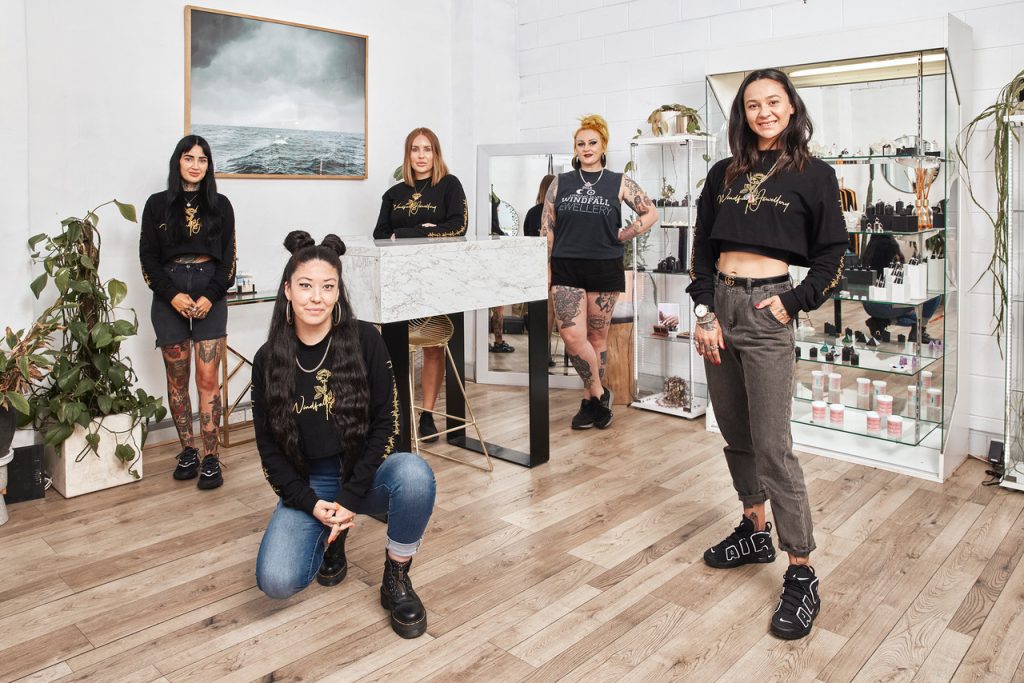The jewellery industry’s post-pandemic reaction saw businesses that adapted quickly to online spaces were able to retain and engage their customers better than those who did not.
Brands were able to connect digitally with their communities, offering information online about their stores’ altered opening hours, and showcasing their dynamic products and services. This has seen a new generation of retail sales emerge.
Businesses that had e-commerce solutions, or were able to quickly set them up, retained their sales and, in some cases, even increased them.
The increase in demand for Australian-made products and resources was clear. Handmade goods appeared to be popular as consumer values changed to reflect their support of local businesses.
As people were restricted in their movements internationally and locally, we saw a rise in disposable income and a strength in sales in the jewellery industry. The shift to online sales meant that people were exposed to a wider range of brands, products, styles and designs. However, with borders reopened, many question whether consumer purchasing habits will remain localised.

“We are grateful to have built a loyal customer base who have always supported us because of our focus on Australian [made and supplied] products. We are hopeful that post pandemic our clients will stick with us as our ethos on design and manufacturing jewellery has been unwavering regardless of anything the pandemic has thrown at us,” says Sarah Lim at Windfall Jewellery.
“Ultimately if we continue to focus on providing the customer experience our customers desire, have the designs they are seeking and offer the flexibility they need, then we feel confident we will not be affected by the shopping shift to international products.”
The transition of retail into the online space over the last two years has benefitted young jewellers who have been able to avoid the usual upfront costs of buying or renting a storefront and purchasing a fitout. Start-up jewellery brands could avoid labour costs of salespeople and offer competitive prices as a result.
Small scale jewellers, online only or with a small studio, were perfectly positioned to benefit from the potency of digital. Most were already set up for e-commerce sales and had a foundation to continue beyond the pandemic. Operating without retail shop fronts, the new generation of retail saw a significant increase in smaller boutique handmade businesses.
Mason Tilly, the creator behind sustainable jewellery brand Finger Candy, used social media to target his customer base of 18-34 year olds, receiving intense and overwhelming support. While he was able to grow his brand, his target market was impacted financially by the pandemic, causing major unpredictability and a decline in sales. Mason emphasises the importance of content creation in sustaining your businesses’ growth and sales.
“In the times when I focused heavily on my online presence I was able to establish growth and therefore sales,” says Mason.

While there have been unexpected positive benefits resulting from the pandemic, it is not all smooth sailing from here.
Over the last two years, purchasing power increased for some consumers who were unable to travel, but as interest rates rise to combat inflation, a reduction in discretionary spending is expected.
Jewellery retailers are expecting a downturn as non- essential spending is cut back. While some retailers fear there’s a rough road ahead, it is important to remember that the industry has come together during hard times in the past, and will continue to offer this support in the future.
“The result of increased interest rates is showing a slightly more conservative consumer at that first ‘big purchase’ stage (i.e. engagement ring). I am finding clients are more open to the idea of alternative options for their statement pieces. For example, coloured gemstones (sapphires, tourmalines and spinel) have been very popular,” says Adelle Eastways from Adelle Louise Diamonds.
Adelle believes that they will be seeing a more conservative spend however, the shift will be towards more unique and individualised purchases that provide value for money. Her advice for other retailers is about knowing your client’s desires inside and out.
“Clients are seeking private and very bespoke services, no matter their expenditure. The fear of spending any money now exists and trust is proving the most valuable asset a jeweller can provide.
This means investing in the education process, ensuring your client is making an informed decision and having patience with clients throughout their journey.” says Adelle.

A new process that has strengthened during the new generation of retail is the addition of online bookings for jewellery appointments. This relatively simple and cheap addition to a website benefits both business and consumer.
The customer can book an appointment outside of ordinary store hours, be notified via text message and can adjust the booking themselves online. Businesses benefit by being able to set expectations beforehand and limit phone calls in store, improving face-to-face service. This technology also provides the business with valuable data regarding marketing and social media by tracking bookings from leveraged platforms.
The jewellery industry will continue to evolve post- COVID, and the shift toward a new generation of retail is clear – digital platforms and sales are here to stay. The use of e-commerce and improved digital presences add value to the customer experience and will aid in sales into the future. Consumer tastes and preferences will continue to change, and so must our responses to their needs.
Read below for related news: